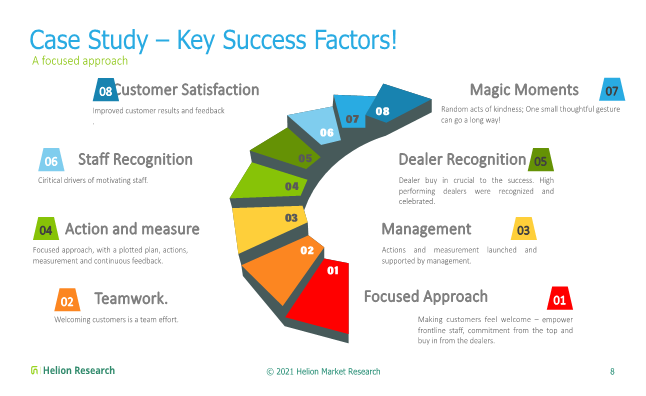
A focused approach towards increasing sales and footfall using Mystery shopping
Sector/Location
FUEL RETAIL SECTOR, AFRICA
Why is it important to measure? |
Why use an MSPA member company? |
Why use Mystery Shopping? |
||
|
The client, a global player in the petroleum industry, has been running an ongoing CX Measurement programme (Mystery shopping & Audits) for several years. Scoring on these metrics, along with feedback via its VOC (Voice of customer) programme were showing stagnation or in some instances a gradual performance decline. There-fore, they deployed a pilot intervention (training and activation) programme supp-orted by a measurement programme on a sample of stations focusing on service improvement. |
It was critical for the client to be able to partner with a reliable, ethical company able to deliver and understand industry best practice. The client wanted to feel comfortable knowing global guidelines were implemented and a local understanding applied in the application as well as design of the programme. As part of the selection process the MSPA membership was taken into consideration. |
Mystery shopping was the preferred methodology. Mystery shoppers could be easily deployed across all regions, in the shortest possible timeframe. Mystery Shopping was used as a tactical tool evaluating specific service focus points. Results were available within 24 hours. Overall results could be used both for immediate operational action steps |
What were the project specifics?
The project used a sample which represented a section of stations including dealer owned and managed; large and small; good and poor performing stations.
Three Key focus areas were identified based on previous research conducted. 1. PEOPLE (STAFF) – staff were seen as the driving force to CARE and create memorable “guest” experiences. 2. FACILITIES – The focus on specifically the cleanliness of facilities included not only customer facilities but also staff facilities. 3. CUSTOMERS – The programme specifically focused on touch points where the client could make an impact, which included not only staff friendliness but also products and promotions (upselling). “Recognising the value of frontline staff and treating customers like guests…”
Shared responsibility was critical for the success of the programme with involvement from Brand Management, Retailers and Frontline staff. The programme was rolled out over a six-month period with measurements before, during and after the training and forecourt specific interventions.
What were the results?
The final assessment (6 months after roll-out) measuring the same standards as the first ones identified a noticeable improvement in all measurement metrics areas across all stations included in the programme.
What were the commercial benefits?
- Global Mystery Shopping scores improved within month 3 and the improvement was maintained during the 6-month cycle. When looking at the Global CX programme participating dealers improved between 10% (previously good performers) and 20% (previously poor performing dealers).
- Staff satisfaction improved overall by an average of 15% from the previous measurement (12 months prior).
For the client the results highlighted the fact that training alone is not enough. Training interventions supported by a focused measurement is critical for performance improvement. Buoyed by the success of the programme the client rolled out the training introduced during the pilot to the station network and revised its CX measurement metrics to further support these interventions to continually highlight success stories and opportunities for improvement.

Download Case Study as pdf file








